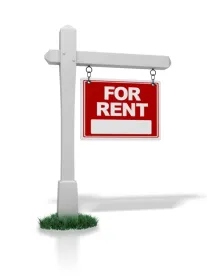Gov. Gavin Newsom signed Assembly Bill 1482 on Oct. 8, 2019, enacting statewide rent control legislation in California, which will take effect on Jan. 1, 2020.1 Below is a summary of select key provisions.
1. ANNUAL CAP ON RENT INCREASES EXPLAINED
AB 1482 Caps Annual Rent Increases at 5% Plus Inflation. Effective Jan. 1, 2020, AB 1482 caps rent increases statewide at 5% plus local inflation per year for the next 10 years, unless lawmakers vote to extend it.
-
If you live in a city that does not already have a local rent control law, rent increases will be limited to 5%, plus local inflation, but can never exceed a total of 10%.
-
For example, if the inflation rate is 3.8%, a landlord could raise rent by as much as 8.8%. If the inflation rate is 6%, a landlord could only raise rent by as much as 10%.
-
-
The rate of inflation will be tied to the Consumer Price Index (CPI) in each metropolitan area. (The CPI increases about 2-3% each per year.)
-
AB 1482 is retroactive to March 15, 2019. Whatever amount a tenant paid as of that date is the amount by which the increase will be based.
-
Rent may not be increased more than twice over a 12-month period (total sum of such increases not to exceed the annual rent cap).
2. JURISDICTIONS WITH LOCAL RENT CONTROL
AB 1482 Does Not Override Local Rent Control Rules. AB 1482 does not apply to housing regulated by local rent control ordinances and the Costa-Hawkins Rental Housing Act. Cities and counties can continue to pass local rent control laws consistent with Costa-Hawkins and set rent caps at any level they choose; however, they cannot affect the buildings and associated rent cap that fall under AB 1482.
-
Costa-Hawkins prevents cities from establishing rent control – or capping rent – on apartment units constructed after Feb. 1, 1995.2
-
AB 1482 leaves in place existing local government rent control ordinances on pre-1995 units.
-
Consistent with Costa-Hawkins, local governments would still be prohibited from imposing rent control, which is stricter than AB 1482 rent caps, on post-1995 units.
-
-
In jurisdictions with local rent control laws, AB 1482 will apply only to housing that both: (1) qualifies for the AB 1482 annual rent cap; and (2) is not otherwise covered by local rent control.3
-
In the city of Los Angeles, the local rent control law only applies to buildings constructed before October 1978.
-
For buildings constructed before October 1978, rent will be capped under the provisions of the city’s law (i.e., 4% in 2019).
-
For buildings constructed after October 1978 and that are at least fifteen (15) years old (1978-2005), rent will be capped at 5%, plus inflation under AB 1482.
-
Buildings constructed after 2005 will have no rent cap until they turn fifteen (15) years old and qualify for AB 1482.
-
-
In San Francisco, the city’s rent control ordinance will continue to cover multifamily housing constructed before June 1979.
-
For buildings constructed before June 1979, rent will be capped under the provisions of the city’s law.
-
For buildings constructed after June 1979 and that are at least fifteen (15) years old (1979-2005), rent will be capped at 5%, plus inflation under AB 1482.
-
Buildings constructed after 2005 will have no rent cap until they turn fifteen (15) years old and qualify for AB 1482.
-
-
3. BUILDINGS IMPACTED
AB 1482 Applies to Apartments and Other Multi-Family Buildings Containing Two Units or More. AB 1482 exempts single-family homes and condos, except when owned by a corporation, real estate investment trust, or limited liability corporation in which at least one member is a corporation.4 AB 1482 also exempts duplexes, when one of the units is occupied by the owner.
-
AB 1482 Does Not Apply to Buildings Constructed Within the Past Fifteen (15) Years.
-
This is a rolling date; units built in 2006 will be covered in 2021, units built in 2007 will be covered in 2022, etc.
-
Thus, for example, apartments constructed in the future would not fall under the rent cap until fifteen (15) years after they’re built.5
-
4. VACANCY DECONTROL
AB 1482 Does Not Apply to Vacant Units. AB 1482 does not apply to vacant units. Owners can continue to reset rents to market rate at vacancy, and then resume conforming to the annual cap of 5% plus inflation under AB 1482.
5. JUST CAUSE EVICTIONS
AB 1482 Prohibits Evictions Without Just Cause. For tenants that have lived in a unit for at least one year, AB 1482 prohibits evictions and non-renewals of leases without “just cause.”
-
There are two types of “just cause”: (1) “At Fault Just Cause,” and (2) “No-Fault Just Cause.”
-
“At Fault Just Cause” includes failure to pay rent, criminal activity, or breach of a material term of the lease.
-
“No Fault Just Cause” includes if the owner/owner’s family intends to occupy the property, withdrawing the property from the rental market or an intent to demolish or substantially remodel the property, or compliance with a local ordinance or order issued by a governmental agency.
-
-
Landlords must give the renter an opportunity to cure “curable lease violations.”
-
If a landlord desires to convert the rentals to condos or “substantially” remodel the property, they will have to pay relocation fees equal to one month of rent.
-
These rules will not apply to cities with their own local “just cause” laws (e.g., San Francisco, Santa Monica, Los Angeles [via recent emergency moratorium]).
1 See final bill here: https://leginfo.legislature.ca.gov/faces/billTextClient.xhtml?bill_id=201920200AB1482
2 Per Costa-Hawkins, the City of Los Angeles is prohibited from extending rent control to apartments built after October 1978, and San Francisco is prohibited from extending rent control to apartments built after June 1979, which represent the dates when those cities implemented their local rent control ordinance. Cities that didn’t have existing rent control laws in place at the time of the 1995 Costa-Hawkins Act are barred from implementing controls on units built after Feb. 1, 1995.
3 Jurisdictions with rent control include the city of Los Angeles, Unincorporated Los Angeles County, Beverly Hills, Culver City, West Hollywood, Inglewood, Santa Monica, Berkeley, Campbell, East Palo Alto, Fremont, Hayward, Los Gatos, Oakland, Palm Springs, San Francisco, San Jose, and Thousand Oaks. (Not an exhaustive list.)
4 Residential dwellings/units that can be sold separately from other units (e.g., condos) are not subject to rent control under AB 1482 provided that: (1) the owner is not a REIT, corporation, or LLC in which at least one member is a corporation; and (2) the tenants have been provided written notice of the same using the following statement: “This property is not subject to the rent limits imposed by Section 1947.12 of the Civil Code and is not subject to the just cause requirements of Section 1946.2 of the Civil Code. This property meets the requirements of Sections 1947.12 (d)(5) and 1946.2 (e)(8) of the Civil Code and the owner is not any of the following: (1) a real estate investment trust, as defined by Section 856 of the Internal Revenue Code; (2) a corporation; or (3) a limited liability company in which at least one member is a corporation.”
5 Based on the date a certificate of occupancy was issued for the new building.



 />i
/>i

